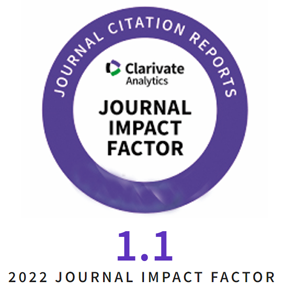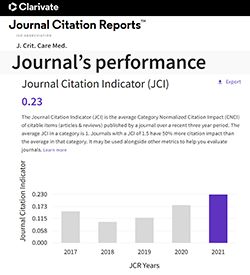Microcirculation, through its complex network of vessels (arterioles, capillaries and venules), plays a pivotal role in maintaining cellular functions. Located between the macrocirculatory system- the heart and large vessels, and the interstitial environment, microcirculation acts as a gateway for oxygen supply (O2), removal of carbon dioxide (CO2), delivery of nutrients and hormones, and plays a crucial role in the immune response, thermoregulation and coagulation control.
In order to maintain an adequate supply of oxygen and nutrients to cells and tissues at the levels of the macro-, regional- and microcirculatory fields, the physiological mechanisms that regulate blood perfusion are closely interrelated.
This functional interdependence between macrohaemodynamics, microhaemodynamics, interstitial space and subcellular structures (such as the mitochondria, the bioenergetic factory of the organism) was demonstrated by Dr. Henry Weil, who explicitly defined the condition of acute circulatory failure or circulatory shock [1,2]. In his work, he highlights the catastrophic consequences of arterial hypotension associated with tissue hypoperfusion in various states of shock. [More]
Category Archives: Editorial
Optimizing Nutrient Uptake in the Critically Ill: Insights into Malabsorption Management
It has already been stated that nutritional support represents a crucial component in the care of critically ill patients [1]. Prolonged negative energy balance during intensive care stay was confirmed as an independent risk factor for mortality. High metabolic demand encountered for critically ill patients may cause significant energy deficits responsible for increased risk of infection, prolonged mechanical ventilation and ICU stay [2-4].
Aditionally, providing nutritional support in ICU patients is often deemd challenging, as enteral feeding intolerance devolps secondary to gastrointestinal dysfunction [5]. Exccesive antimicrobial usage along with associated risk of nosocomial diarrhea may further exacerbate feeding intolerance. [More]
The Human Microbiome in Intensive Care – A Journey Forward?
The human microbiome, defined as a personal, genomic signature of our latent or manifest infectious profile (bacterial, viral, fungal), located predominantly in the digestive tract, opens the door to personalized medicine studies on a scale larger than the human genome in terms of data that can be analyzed and interpreted. Compared to the human genome, which has approximately 23,000 genes, the European Metagenomics of the Human Intestinal Tract and the Human Microbiome Project have reported 3.3 million non-redundant microbial genes [1]. [More]
Fluid Therapy from Friend to Foe
The general management of shock, or any syndrome characterized by inadequate tissue perfusion involves identifying and addressing the underlying cause while also reversing the disorder produced in any of the 4 components of the cardiovascular system (blood and fluid compartment, vascular system, heart and circulatory system) [1] through combined therapeutic methods that are based on rapid volume resuscitation, usually pursuing target goals. Although the “salvage, optimization, stabilization, de-escalation” mnemonic has been utilized as a broad framework for volume resuscitation since 2016 [2], the approach to fluid therapy in critically ill patients remains inconsistent with current clinical practice, contingent upon the practices adopted by individual healthcare institutions. [More]
Artificial Intelligence: The Next Blockbuster Drug in Critical Care?
The realm of critical care medicine is always waiting for the game-changing innovation – that elusive breakthrough poised to dramatically transform practice and yield remarkable results. Various contenders have come and gone: surfactant therapy, synthetic colloids, drotrecogin alfa [1-3]. While some have been consigned to the annals of history, a select few, such as low-tidal-volume ventilation, have endured [4]. Others re-emerge time and again, hoping that they’ll have an evidence-based role somewhere. The level of excitement is not always correlated with the staying power of the innovation, and sometimes the hype can overshadow the reality. [More]
Rebranding Nutritional Care for Critically Ill Patients
Since the organic and molecular roles and function of nutrients in supporting homeostasis for hospitalized patients have been already stated, remarkable advances have been achieved in the field of clinical nutrition [1]. Replacing the old terminology of “nutritional support” with the new concept of “nutritional therapy” both European Society for Clinical Nutrition and Metabolism (ESPEN) and American Society for Enteral and Parenteral Nutrition (ASPEN) emphasized that adequate nutrients administration reduces oxidative stress, metabolic response and sustains the immune response [1, 2]. The persistently increased prevalence of hospital malnutrition, inappropriate nutritional support during hospitalisation contributes undeniably to an increased mortality, especially in intensive care units [3].
In order to promote the importance of nutritional care and increase awareness among authorities and clinicians, “The International Declaration on the Human Right to Nutritional Care” was adopted during ESPEN Congress 2022 in Vienna. This Declaration highlights that nutritional therapy is a human right in the same manner as the right to food and health [4]. Moreover, all the undersigned societies, including Romanian Society of Enteral and Parenteral Nutrition (ROSPEN), raise awareness of the high prevalence of disease-related malnutrition along with the lack of access to appropriate nutritional support during and after hospitalisation. [More]
In between Opioid Crisis and the Need to Treat Pain, Where Do We Stand?
Acute and chronic pain are very disturbing conditions for the patient, with numerous implications on the short- and long-term outcome of patients [1]. While acute pain is experienced mostly after surgery, and in some other medical conditions as well, chronic pain may be the symptom or the result of numerous medical conditions among which cancer, muscle-skeletal or neurodegenerative diseases and surgery or persistent inflammation are, probably, the main causes [2].
This is why guidelines, drugs and medical interventions have been proposed to treat acute and chronic pain [3, 4]. While acute pain, both mild or severe is well manageable with treatment, chronic pain may be very disturbing and debilitating for the patients, especially in patients with cancer, neurodegenerative or muscle-skeletal disorders and is generally much more difficult to treat [5]. [More]
Personalized Physiological Medicine as the Future of Intensive Care Medicine
Personalized medicine has become increasingly popular over the last decade as a response to the variability of patients’ responses to certain medical or technological therapies [1]. The effectiveness of randomized controlled trials has become increasingly controversial. While personalized medicine came to be associated with the field of oncology, critically ill patients have also become a beneficiary of personalized medicine. Patients admitted to the intensive care unit have a series of multiple and intricate dysfunctions as well as complex and rapidly changing pathophysiological mechanisms underlying their disease. That is the background from which the concept of personalized physiological medicine (PPM) emerged. It is directly related to the therapy needs of a patient and their physiological status, determined by a certain genetic profile and characterized by biomarkers, specific to the individual and not exclusive to the disease [2-4]. Monitoring of organs becomes insufficient without continuous monitoring of microcirculation, cell metabolism, and the entire cellular functionality; the translation of these dynamic data into quantifiable parameters requires predominantly in vivo monitoring. [More]
Dubito ergo sum. Pathologies that can mimic sepsis
Sepsis is a potentially deadly organ dysfunction caused by a dysregulated host response to infection, with a high mortality rate [1]. Generally, sepsis is acquired in the community, and its development is slow, making diagnosis challenging. Early broad-spectrum antibiotics and effective source management improve prognosis [1, 2].
Sepsis has a huge financial impact on the health-care system; septic patient treatment in the United States alone is projected to cost more than $20 billion per year. The cost in human life is equally high; mortality rates in sepsis and septic shock are believed to be more than 10% and 40%, respectively [3]. Sepsis is one of the most prevalent causes for admission to the intensive care unit (ICU) and the leading cause of mortality in ICUs across the globe [3, 4]. [More]
Target Controlled Infusion: An Anaesthetic Technique Brought in ICU
Target Controlled Infusion (TCI) represents a technique of intravenous anaesthetic drug administration where we aim a predictable concentration of the drug in a specific body compartment.
The technique uses a computer-controlled infusion pump which delivers the anaesthetic drugs based on patient’s parameters (height, weight, age, gender and others) in order to achieve a predicted plasmatic level (TCIp) or a specific site (brain) (TCIe) [1].
The main advantage of the system consists in theoretical calculations and application of precise doses. TCI is designed upon the three-compartmental pharmacokinetic model, maintaining the same level of sedation, and avoiding drugs accumulation. This delivery method could also reduce the intra-operative awareness, emphasising on patient safety. However, the practice showed that those theoretical facts may not be easily applied into clinical practice [2].[More]




